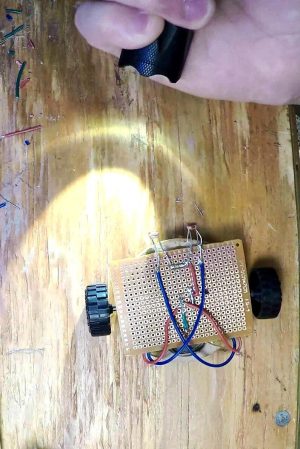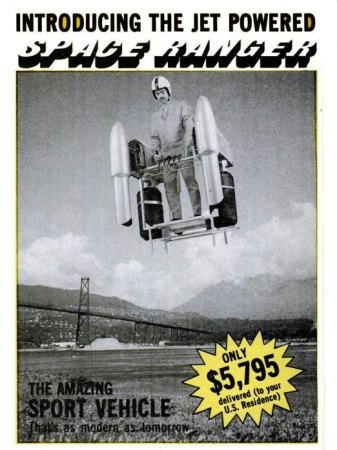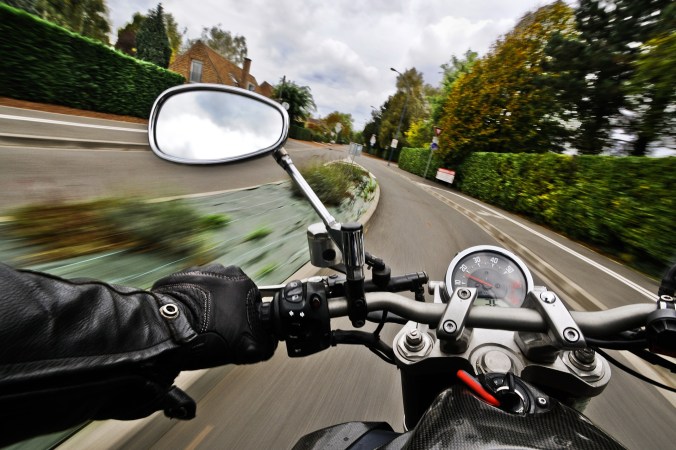

For the DIY petrol head, the ultimate project is building a kit car. The downside? It takes serious cash and serious time.
Similarly, restoring a classic car means following someone else’s rules, go-karting is fast but so very serious, and soapbox racers are for kids and wind-tunnel-equipped university engineering departments.
So what’s a gearhead with a small garage and $2,000-$3,000 in spending money to do? There is an answer: it’s called a cyclekart.

What the rack-and-pinion is a cyclekart?
When automobiles first went mainstream, every car was essentially a high-end luxury sedan. Huge, heavy, and most of all, expensive. Didn’t have the cash but craved speed and smell of oil and gasoline? Your only other option was to ride a motorcycle.
So entrepreneurs created a new class of four-wheeled conveyance. Cheaper and lighter than a car, more comfortable and stylish than a motorbike, the “cyclecar” was a hit for exactly as long as it took automakers to design lighter cars. That turned out to be about 15 years and a world war. So much for the cyclecar.
Flip forward to the turn of the millennium, when conditions were right for the creation of a new kind of hobbyist racer. Small, four-stroke engines were only a Google search away, you could buy welding gear for hundreds of dollars rather than thousands, and tubular steel was sold by the foot at your local big-box hardware store.
Most of all, though, the internet allowed obsessives to stare at pictures of 1930s Formula 1 racers (like the Mercedes-Benz W125, which many of us today would think of as the Monopoly Car), and decide: “Yes, I think I could build a small one of those.”
Two decades later, all of this has become even cheaper and easier to get into.
In short, a cyclekart is a self-built hobbyist racer that sits somewhere between the hardcore engineering of a go-kart and the bent nails, apple crates, twine, and gravity-assist of a soapbox racer.
It uses a steel frame, open-wheel design, with a rear-mounted 4-stroke engine (usually a 200cc, 6.5-horsepower Honda single-cylinder GX200), simple gearing setup, single drum brake, leaf springs, and eccentric 1930s-inspired bodywork.

Top speed is usually around 40-45 mph, which cyclekarters agree is just before the point where responsibility outweighs power. Yeah, you should wear a helmet, but because cyclekarts aren’t road legal or even recognized by regulators at all, you’re certainly free to feel the wind in your hair. At your own risk, of course.
Gee, that all sounds a bit hardcore…
Sure, building the running gear of your cyclekart requires you to dabble in serious engineering, but that’s where the hardcore ends. Because unlike all other forms of karting, the entire purpose of a cyclekart is… messing around with cyclekarts.
Or to put it another way: for cyclekart enthusiasts, the build is so much more than half the fun. It’s not about racing other drivers, teeth bared. It’s about racing other drivers while giggling because you’re in a tiny Bentley. Actually caring who wins the race is the last thing on a cyclekarter’s mind.
And so a true cyclekart enthusiast does not buy a complete vehicle, because that defeats the purpose of the hobby. Cyclekarts are self-built, because cyclekarters seek to reignite the metaphorical spirit of pure invention that started Formula 1 racing in the 1930s. Also the literal spirit of petroleum. These karts go well, sure, but the joy comes from making them look amazing as they rumble along a dirt track.
For a certain kind of DIY enthusiast, the real appeal of a cyclekart is that while everyone takes their projects seriously, nobody takes themselves too seriously. It’s meant to be fun first, and racing second. You start with bits of steel, some old Honda motorbike wheels, a teeny engine, and a vague idea of what you want your car to look like. And after a journey of discovery, you end up with your own little jalopy that really goes. What’s not to love?

Isn’t this just a really fancy soapbox racer?
Technically, soapbox racers and cyclekarts are both examples of go-karts or “karts” in general. What all these machines have in common is an open-wheel design and that they are smaller than regular cars.
If you say “go-kart” or “kart” without qualification, you will be understood to mean a really flat looking little thing with tiny wheels and a ridiculously powerful engine (some specialized two-stroke models develop as much as 48 horsepower), which you rent to drive around a track delineated by stacks of tires that you will crash into at some point.
The humble soapbox racer, meanwhile, is more correctly called a “gravity racer,” and if you drive one long enough, it will take not just the shirt off your back, but plenty of your skin too, as you slide down the local Big Hill upside-down at 38 mph before intersecting Old Man Peterson’s blackberry bush.
There are also Superkarts, which are raced on outdoor circuits and can hit 155 mph. From this, it’s easy to see that the cyclekart, while neither the fastest or most white-knuckle, is clearly the most elegant and civilized form of karting.
So… are there instructions?
The basic “go bits” of each cyclekart are more or less the same. Various forums and community websites detail the so-called Stevenson Formula, which shows how to build the chassis and running gear. It also specifies the dimensions of a cyclekart: 17-by-1.75-inch spoked rims, 2.5-by-17-inch tires, 38-inch track, and a wheelbase of about 66 inches.
After some grappling with MIG welding and trying to figure out where the 1/4-inch wrench went—you had it right there in your hand—the mini-motorist will be left with a wheel at each corner, a pull-start engine, a simple clutch, steering, a basic braking system, and that’s it. Everything else is up to the ingenuity of the builder.

The general consensus is that the bodywork of a cyclekart should be visually inspired by pre-World War II Formula 1 racing. Indeed, from browsing the build journal page at The CycleKart Club, you’d be forgiven for thinking every new cyclekarter wants to build a Bugatti Type 37 or something based on Mercedes-Benz’s Silver Arrow racers of the 1930s.
But then you panel beat the hood over the jig you made from your kid’s old bunk bed, and it doesn’t quite look like a Type 37. In fact, it reminds you more of an old Fiat of some kind, and those are yellow, and you still have some yellow paint… and so it goes.
When the car looks like you want it to, order stickers and badges from the internet (fake speedometer and tachometer dials are a common in-joke), slap them on, and the results may surprise you.
Cyclekarts aren’t just clever—the best of them are actually beautiful. They look like the kinds of pedal cars driven around in old Hollywood movies by the children of extremely rich people, except a cyclekart weighs 250 pounds and can easily hit 45 mph.
Okay, so I built a 1:4-scale Alfa Romeo RL Targa Florio… now what?
Nice. You even computer-matched rosso corsa for the paint—great color! Now it’s time to take your cyclekart out to the closest meet, often called—absolutely tongue-in-cheek—a Grand Prix.
While cyclekarting only has a worldwide community measured in the high thousands, you might be surprised how close the nearest regular meet-up is. YouTube is an excellent resource for figuring out who is out there racing their cyclekarts for fun, and there are community websites and forums that welcome new builders and drivers with open arms.
After a weekend spent hurtling around a dirt track, the average cyclekart usually ends up somewhat the worse for wear, at least mechanically speaking. But that means you get to take the kart home and work on it some more, and that’s the fun part. You get to tweak it, and make it tougher and better.
Also, because the cyclekart platform itself is so standardized, new drivers don’t suffer the demotivational experience of seeing the veterans disappear in a cloud of expertly-tuned V-twin motorcycle engine smoke—everyone uses the same kinda-rubbish 6.5-horsepower single-cylinder. Nobody has four-wheel-drive, amazing suspension setups, or eight-speed double-clutch transmissions. Customized fuel? Pfft.
No, true excellence in cyclekarting comes from turning up with a shiny black Salmson Grand Prix 1927 or bright blue Delage D6 and having everyone go, “Dude, what is THAT?!”















